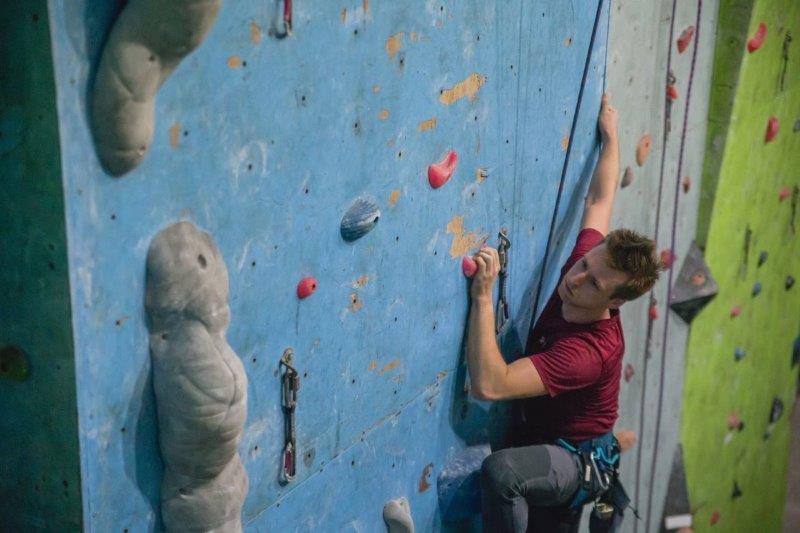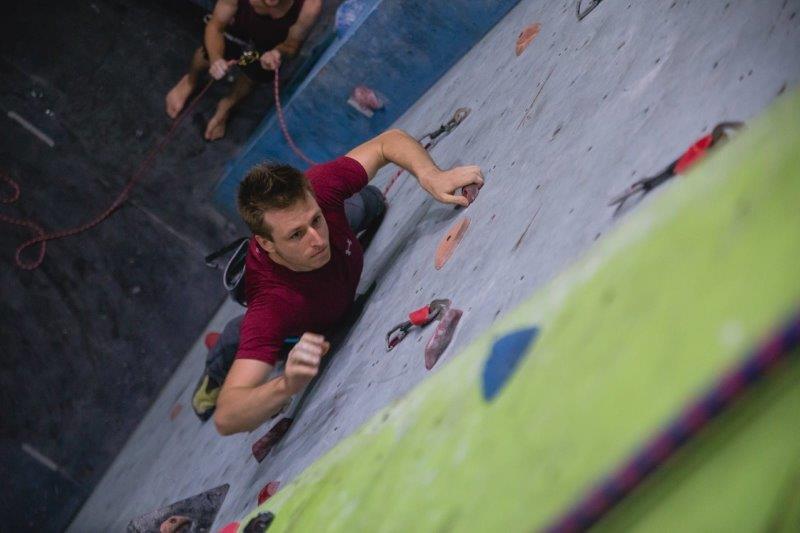As climbers, we’ve often received questions from fellow climbers on everything from tips to gear to technicalities like grading climbing routes. In reality, climbing grades are more than just a badge of honor – they’re absolutely crucial for safety and for charting personal progression.
So, we thought it was time we pulled back the curtain and gave you a more comprehensive breakdown of it. In this article, we’ll share everything you need to know about what those numbers mean and how climbing routes are graded.

Why Grade Climbing Routes?
Over the years, climbing techniques and equipment evolved, and so did the way we grade our climbs.
Back in the day, grading was much simpler. There were fewer levels of difficulty, factors were more basic, and grades were more subjective. Over time, a nuanced system had to emerge to truly dive into the complexities of different routes and make grading more objective.
After all, a route’s difficulty will tell you a lot about how successful you may be when attempting it. Without specifics, how would you know what you’re getting into?
Think of grades like levels in a video game. Just as you wouldn’t start with the hardest level without some practice, you wouldn’t want to tackle a super tough climb without some experience.
Climbing grades help climbers choose routes that match their abilities. This keeps your climb not only safe but also more fun. As you develop your skills, you can start to tackle more difficult climbs.
Decoding the Types of Climbing and Their Grading Systems
The beauty of climbing is in its diversity. There are several different types of rock climbing, and each one has its own grading system:
- Bouldering: In the US, boulderers swear by the V-scale or Hueco Scale (V0-V10). In Europe, however, they abide by the Fontainebleau grades (6A-7C).
- Sport Climbing: We often refer to the Yosemite Decimal System (YDS) when we’re out sport climbing in North America (5.5 to 5.15). Globally, however, you might use anything from the French to the UIAA (I to X), Australian (1-35), or British systems (M to ES).
- Traditional Climbing: Traditional, or “trad” climbing, not only assesses the route’s technical difficulty but also the potential risks involved. YDS and British grading are go-to’s here.
- Aid Climbing: For those times when we have to rely on devices and equipment, we grade from A0 to A5, signifying the intensity of aid needed.
- Ice and Mixed Climbing: When we’re feeling particularly frosty, it’s the WI and M scales we need to check (M2 to M7+).
- Alpine Climbing: For those mountainous adventures, Alpine grades consider length, altitude, and the objective dangers that might pop up (F/PD to TD+).
- The type of climbing you take part in determines the type of scale you need to follow. Be sure to research your specific climbing type to determine the level of difficulty you’re ready to tackle.
Peeling Back the Layers: Factors Influencing Route Grading
- Bouldering: In the US, boulderers swear by the V-scale or Hueco Scale (V0-V10). In Europe, however, they abide by the Fontainebleau grades (6A-7C).
- Sport Climbing: We often refer to the Yosemite Decimal System (YDS) when we’re out sport climbing in North America (5.5 to 5.15). Globally, however, you might use anything from the French to the UIAA (I to X), Australian (1-35), or British systems (M to ES).
- Traditional Climbing: Traditional, or “trad” climbing, not only assesses the route’s technical difficulty but also the potential risks involved. YDS and British grading are go-to’s here.
- Aid Climbing: For those times when we have to rely on devices and equipment, we grade from A0 to A5, signifying the intensity of aid needed.
- Ice and Mixed Climbing: When we’re feeling particularly frosty, it’s the WI and M scales we need to check (M2 to M7+).
- Alpine Climbing: For those mountainous adventures, Alpine grades consider length, altitude, and the objective dangers that might pop up (F/PD to TD+).
The type of climbing you take part in determines the type of scale you need to follow. Be sure to research your specific climbing type to determine the level of difficulty you’re ready to tackle.
Peeling Back the Layers: Factors Influencing Route Grading
There are many factors that give a climbing route its proper grade. Here are each of the different factors that can impact the grade a route gets.
Technical Difficulty
At the core of every climb is its technical difficulty. Think of it as the dance steps of rock climbing. Some moves require a gentle touch and step up, while others demand sheer brute strength on an overhang, and often it’s a captivating mix of both.
So, when you’re executing a delicate balancing act on one foot to the next or relying on that explosive dyno core power to get to the next jug, that’s the technical challenge speaking.
Endurance
Ever felt like a climb just goes on forever, testing your stamina? That’s where endurance comes in. Some routes ask for a quick burst of energy, while others test your limits over an extended period, making you question every energy bar you didn’t eat before the climb.
Typically routes that are over 30 moves are a good test of endurance, as is sport climbing in general, as its a long 15-metre route and tests your tenacity and endurance to onsight it. Bouldering, however, is a shorter but highly dynamic form of climbing where endurance is key, but not as crucial as other technical prowess like dyno moves, sit ins and matching..
How good are you at regulating your energy use, forearm strength and fear?
That’s endurance grading for you.

Exposure
For many, there’s nothing quite like the adrenaline rush of being high off the ground which is experienced in lead climbing and trad climbing just to name a few. But, exposure is not just about height – it’s also about how “out there” in the elements you feel.
A climb might not be technically hard, but if it makes your heart race as you look down, hear the wind or the rustle of the trees in the far distance as you commit to that move. That raw sensation of exposure can elevate its grade.
Risk and Protection
While we all love the thrill, it’s essential to know what we’re getting into. A route’s grade often considers potential dangers and how well you can protect yourself from getting injured while rock climbing.
Outdoor vs indoor climbing has different levels of danger to injury. Is there a tricky move above a sharp rock? Are the places to place protection sparse? Each of these factors can influence grading as well.
Environmental Factors
The great outdoors isn’t always predictable. Sometimes, it’s the external factors that up the grade of a route.
Climbing in the sweltering heat, at dizzying altitudes, or on a particularly slick type of rock, for example, can change the game.
Just as two routes might seem similar in structure, the environment can be the deciding factor in grading.

Subjectivity in Grading
Climbing is as much a personal journey as it is a physical challenge. What feels like a walk in the park for one might be a mountain for another.
Our body types, height, climbing experiences and varied technical prowess can affect our perception of a route. Thus, while there are standardized grades, there’s always room for personal interpretation.
It’s this subjective nature that makes climbing a deeply personal and unique adventure for each one of us.
Regional Variations and Historical Context
In some climbing areas with a long history, the grades can be a reflection of the standards of a bygone era. As techniques and gear evolve, some grades might seem sandbagged (harder than the grade indicates) based on today’s standards.
In addition to this, grading can vary from region to region. A 5.10 in one part of the world might feel very different from a 5.10 somewhere else, due to local grading traditions and variations in rock type or climbing style. These comparisons must be considered by those grading routes.

People Who Grade Routes
So, who’s the brave soul that decides a new route’s grade? Typically, it’s the first person who scales it. But, like all great stories, the narrative can change as more climbers share their tales and experiences on that route.
1. First Ascensionists
The person (or group of people) who first climbs a route, known as the first ascensionist, usually assigns the initial grade. It’s their best guess based on their experience with climbing and their understanding of established routes and their grades.
Given that they’re the first to have interacted with the route in its entirety, they hold a unique perspective on its challenges.
2. The Climbing Community
Grades are, in many respects, democratic. After the first ascensionist gives a grade, other climbers will attempt the route and provide their feedback.
If the majority feels the initial grade was too easy or too hard, the grade might get adjusted. The grade solidifies as more climbers tackle the route and reach a consensus.
3. Local Climbing Organizations and Guidebook Authors
In some climbing areas, local organizations or climbers who are writing guidebooks may play a role in determining or adjusting grades, especially when trying to maintain consistency in grading across a climbing area.
4. Experienced Climbers
Climbers with a wealth of experience, who have climbed numerous routes of varying grades around the world, often weigh in on grading debates. Their vast exposure to different routes provides them with a broader perspective on grading.
Final Thoughts
Climbing grades help us prepare for our climbs in a safe and responsible way. They guide our adventures, challenge our limits, and ensure our safety.
As we journey through the world of climbing, these grades are both our map and our compass. Going forward, we encourage you to push your boundaries and try out a new route once you feel you’re ready.
To prepare to tackle a higher grade, why not try training using our home training and workout inspired by rock climbers?

No Comments